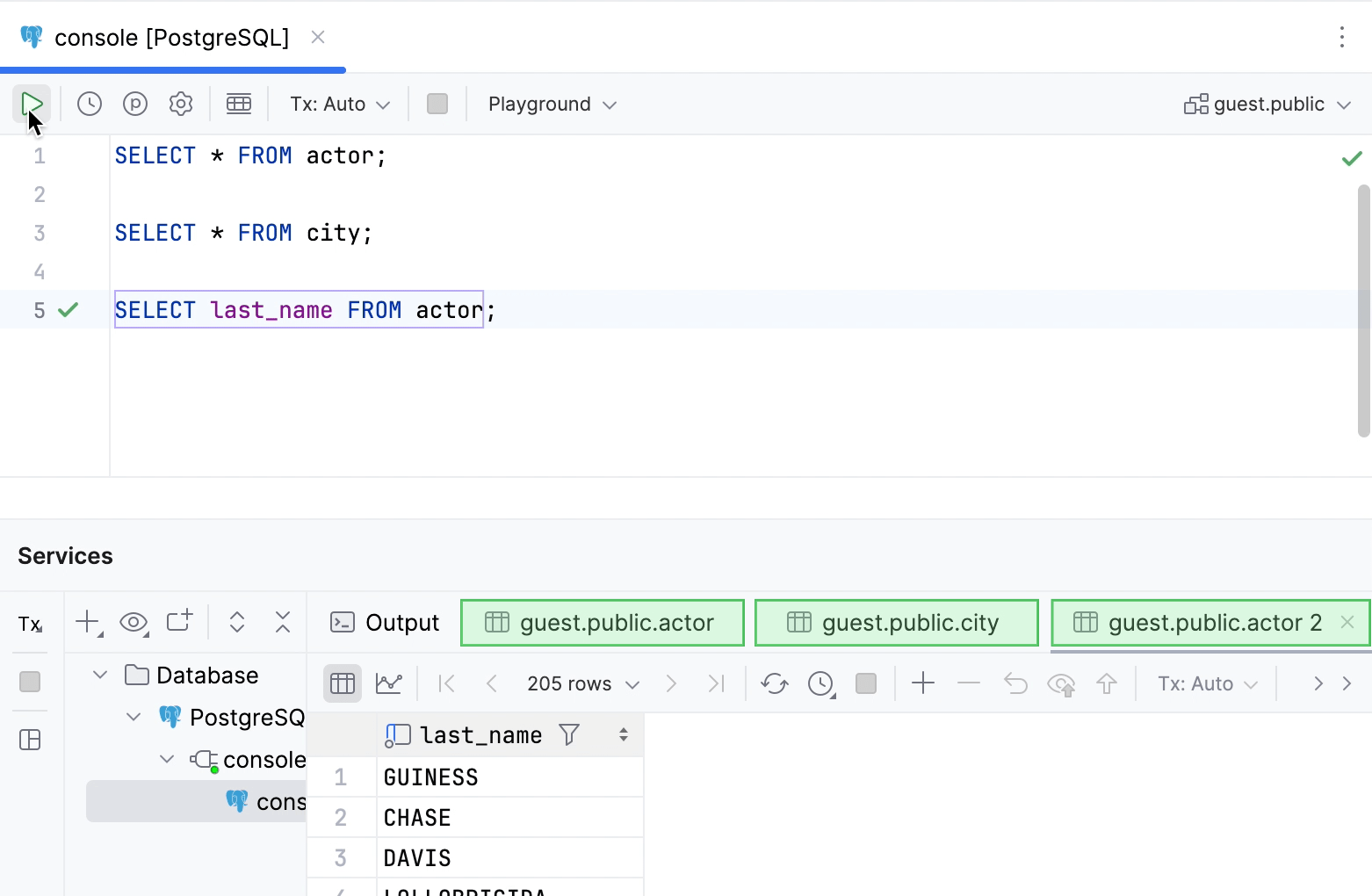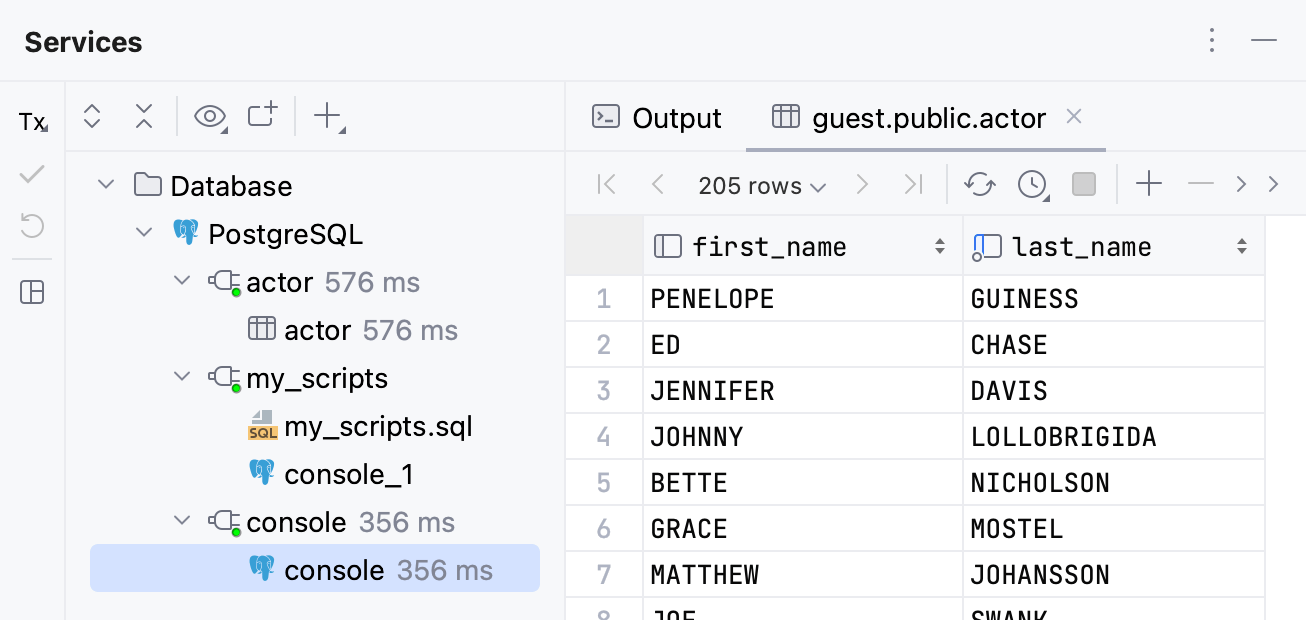Query results
Usually, when you run a query, you receive results in a table format. DataGrip displays the results in a data editor. For each statement, the data editor with results appears in a separate tab in the Services tool window. For example, if you run three SELECT statements in the query console, you will see three tabs in the tool window.

The data editor and viewer, or data editor, provides a user interface for working with data. In the data editor, you can sort, filter, add, edit, and remove the data as well as perform other associated tasks. For full information about data editor, refer to the Data editor and viewer topic.
For more information about query consoles and Services tool window, refer to Query consoles and Services tool window.
Result tabs
Open a new tab for each new query
By default, DataGrip updates the same tab with results each time you run a new query after the previous one. You can change this behavior and create a tab each time you run a new query.
In the IDE settings Ctrl+Alt+S, go to .
Select the Open results in new tab checkbox and click OK.
Use custom titles for tabs with results
You can define a tab title in the comment section before the query. In the Treat text as title after field, you can reserve a combination of symbols or characters after which any text will be treated as a tab title. By default, no combination is used, so any text after -- or /* is treated as a tab title.
Open settings by pressing Ctrl+Alt+S, navigate to .
In the Treat text as title after field, define a combination for tab titles.
To disable this feature, open settings Ctrl+Alt+S, navigate to , and clear the Create title for results from comment before query checkbox.
For more examples of custom titles for tabs, refer to Name the result tabs at youtube.com.

Pin the tab with query results
If one and the same tab is used to show your query results, and you get the result that you want to keep, you can pin the tab to the tool window.
Right-click the tab and select Pin Tab.

In-Editor Results
You can also view the query results within the editor. To do that, use the In-Editor Results feature.
To toggle the In-Editor Results feature for the current file, click the In-Editor Results button (
) on the toolbar.


To toggle the In-Editor Results feature for all files across the IDE, open settings by pressing Ctrl+Alt+S and navigate to . Clear the Show results in editor checkbox.

Result sets
View two result sets in the editor
Click the In-Editor Results button (
) on the toolbar to view the result sets one above the other.

Edit values in the result set
In the result set, click a cell value that you want to edit.
Specify a new value and press Enter.
To submit changes to a database, click the Submit button (
) on the toolbar, or press Ctrl+Enter.
For more information about submitting changes to a database, refer to the Submit changes to a database topic.

Compare two result sets
Run queries to tables that you want to compare.
In the Services tool window, click the Compare Data button (
), and select the result set that you want to add to diff.
If needed, change a value of the Tolerance parameter in the comparison dialog. The Tolerance parameter defines a maximum number of differences that are allowed between two result sets. For example, if you want to consider two rows as equal if their data differs in a single column, enter
1in the Tolerance field.See another example of comparing two result sets in Compare data at youtube.com.
Output tab
View query log
On the Output tab in the Services tool window, you can see a log of user and internal queries.
In the Database Explorer () , , open a query console by right-clicking a data source and navigating to .
Alternatively, select a data source and press F4.
Run a query.
In the Services tool window that opens, click the Output tab.
Services tool window reference
For more information about tool window controls and tabs, refer to the the Services tool window topic.
